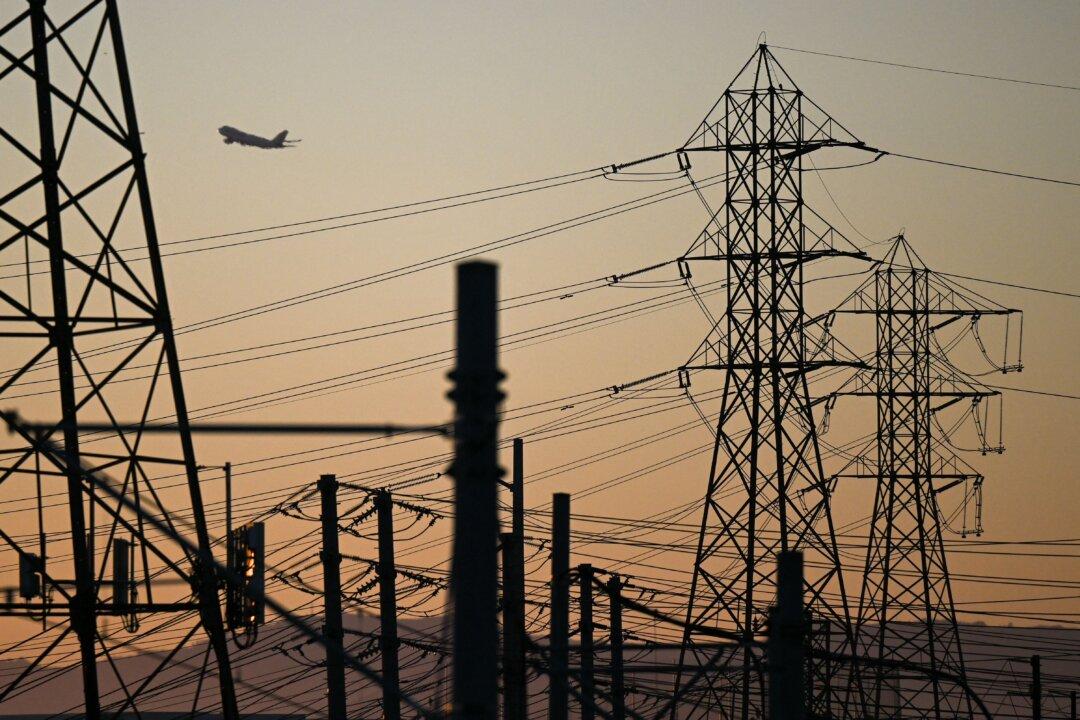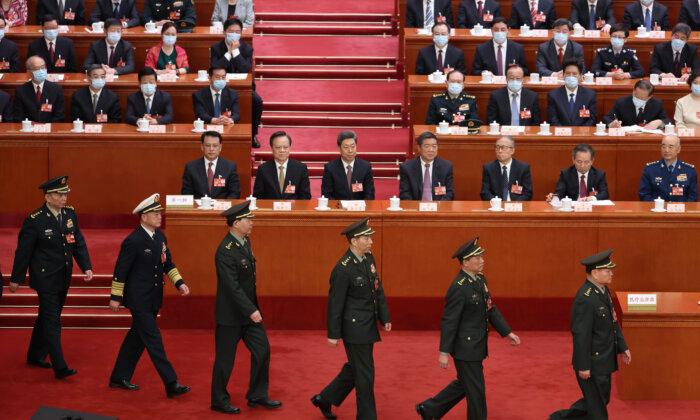Commentary
Chinese hackers are positioned to potentially incapacitate U.S. infrastructure and energy grids in a wartime scenario.
The Joint Cybersecurity Advisory, including the U.S. National Security Agency, the FBI, the U.S. Department of Energy (DOE), and various other domestic and international partners from the intelligence and energy sectors, identified China as the primary threat to U.S. electrical grids and infrastructure in a report released on Feb. 7.
For quite some time, the U.S. intelligence community has been issuing alerts regarding the Chinese regime’s intelligence services continually infiltrating U.S. infrastructure, positioning themselves for potential attacks in the event of war between the United States and China. Chinese hackers have been identified lurking within U.S. infrastructure for up to five years, biding their time for an opportune moment to strike. This threat extends beyond electrical grids to encompass water treatment facilities, communications systems, oil and natural gas pipelines, and transportation networks.
The FBI has uncovered instances in which Chinese hackers installed botnet malware on both home and office computers, providing Chinese Communist Party (CCP) agents with an extensive network of devices across the United States. Once inside, hackers conduct pre-operational reconnaissance and network exploitation to identify vulnerabilities to exploit when the timing is optimal.
There have been multiple significant attacks on vital U.S. systems in recent times. Last year, hackers linked to the CCP gained access to the email account of the U.S. ambassador to China, along with accounts belonging to the State and Commerce departments. In 2021, ransomware struck the Colonial Pipeline. November 2023 saw cyberattacks hitting various water treatment facilities. Authorities warn that more attacks are likely imminent.
The Cybersecurity and Infrastructure Security Agency (CISA) cautions that ransomware assaults on critical infrastructure are increasing, particularly targeting operational technology systems. These attacks are not only more frequent but also growing in sophistication, often leveraging artificial intelligence (AI).
While in the past, terrorists and saboteurs relied on conventional weaponry such as guns and bombs, today, entities such as China, North Korea, or terrorist groups recruit tech-savvy college graduates. Rather than needing to physically infiltrate the United States with fake documents, potential attackers could be located anywhere globally, connected via the internet or satellite.
As malicious actors become more sophisticated, U.S. infrastructure is becoming more vulnerable. The energy sector, in particular, is at risk because of its reliance on intricate and interconnected systems. Incorporating more affordable devices with traditional networking protocols into industrial control systems has expanded the potential for cyberattacks on the grid. Bad actors can exploit consumer Internet of Things linked to the grid’s distribution network, such as air conditioners and heaters, transforming them into botnets.
These botnets could then be activated to manipulate demand across distribution grids. Additionally, the energy grid’s reliance on GPS for timing, monitoring, and control of power generation, transmission, and distribution poses another vulnerability. Disruption of GPS could lead to widespread blackouts, economic disruption, infrastructure damage, and social unrest.
The alarming aspect of using hacking as a weapon lies in its accessibility to nations with smaller defense budgets, including Iran and North Korea. These adversaries have demonstrated capability and have executed similar attacks. The U.S. intelligence community identifies both nation-states and criminal groups as significant threats to the U.S. energy grid and infrastructure. Even terrorist organizations without state support but equipped with powerful computers can pose a risk to U.S. systems.
Nuclear-capable nations such as North Korea and Iran could potentially utilize electronic magnetic pulse (EMP) technology through short-range missiles detonated in the atmosphere. This could cause disruption or damage to electronic devices and infrastructure, varying from minor glitches to permanent harm based on the pulse’s strength and the susceptibility of targeted systems.
The disruptive nature of an EMP attack, even a modest one, could induce widespread chaos, affecting crucial services such as electricity, communication, and transportation and causing significant economic and societal harm. Concerns also arise regarding the possibility of terrorist groups acquiring this capability in the future.
The DOE, alongside its Office of Intelligence and Counterintelligence (OICI), is tasked with safeguarding America’s energy grid. OICI, in collaboration with CISA, also bears the responsibility of defending the nation against cyber threats. Defense priorities are poised to shift as warfare evolves to encompass new frontiers such as space, cyber, and energy infrastructure. Entities such as the Space Force, the DOE, OICI, and CISA are transitioning from peripheral agencies to frontline defenders. Concurrently, in the interest of national security, governmental regulation of the internet, AI, and other home and business technologies may become necessary, potentially raising concerns regarding rights restrictions.
Views expressed in this article are opinions of the author and do not necessarily reflect the views of The Epoch Times.







